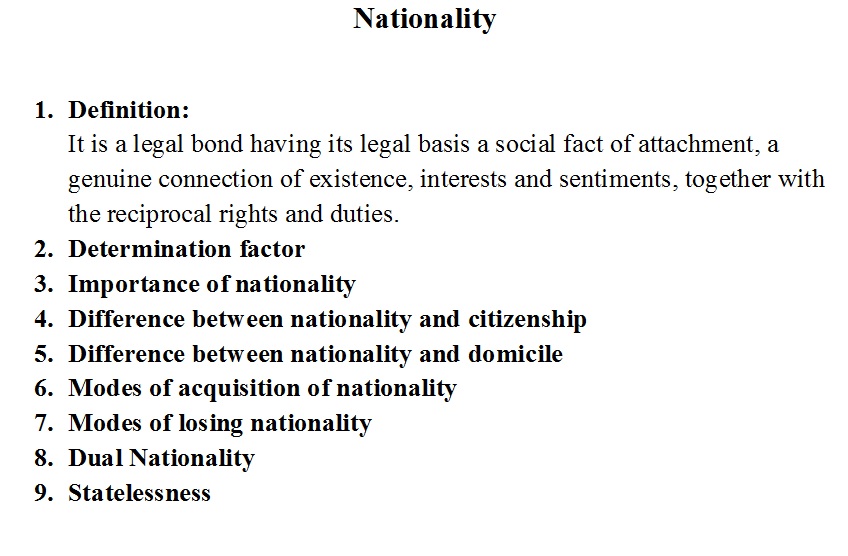
Week 5 Nationality in International Law
Pakistan enforced its first citizenship law, the Pakistan Citizenship Act, 1951 (“the Act”), on 13 April 1951. Before its creation in 1947, Pakistan was part of the British-Indian colony. Pakistan inherited several procedural and substantive laws as colonial legacy. Nonetheless, the British-India colony did not have any law on the issue of citizenship. The Act was especially drafted to accommodate diverse group of individuals then residing in Pakistani territory. The Act defined different modes of acquisition of citizenship and features the instances of loss of citizenship. Since 1951, the law has been amended several times to adapt to the evolving political landscape of the country. The citizenship as a legislative subject falls exclusively in the domain of the Federal Legislature and therefore, all amendments in the Act are also passed by it.1 In the second part of the report, it explores the historical setting in which the Act was introduced. In this regard, the citizenship provisions of the Act which were required to fill in the lacuna created by the event of partition of British India and mass migration to Pakistan have been discussed. The details of laws and cases which involved citizenship claims either directly or indirectly have also been analysed. In the ensuing part, the report discusses the current citizenship regime at length i.e. the modes of acquisition of citizenship, the loss of citizenship and the law on dual nationality in Pakistan. The section on acquisition of citizenship, initially examines the mode of acquisition of citizenship by birth and following on from this, the second section sheds light on the citizenship status of Afghan refugees. The third section details the acquisition of citizenship by descent. Next section provides information about the acquisition of citizenship through migration. The mode of acquisition through naturalisation and the requirements of law in this respect have been examined in the fifth section. The following two sections in the report focus on some of the exceptional modes of acquisitions. The Act allows Commonwealth citizens to apply for citizenship under the Act on the basis of investment in the country; the prerequisites for this mode of acquisition with salient features of investment policy have been discussed in the sixth section. The seventh section explains the special place of Kashmiri subjects and their right to citizenship as spelled out in the Act. The eighth section describes the citizenship rights of a woman married to a Pakistani national. Further, the report expounds upon the historic event of separation of East Pakistan (Bangladesh) and the corresponding changes made in the Act to redefine the criterion of citizenship. The succeeding section looks at the mode of acquisition of citizenship by incorporation of territory. Following the discussion on modes of acquisition, the report illustrates various scenarios in which a person would become disentitled to or deprived of citizenship. Lastly, the legislative history and development of jurisprudence of dual citizenship in Pakistan is set out. In the end, a conclusive analysis of the citizenship law of Pakistan has been presented.



